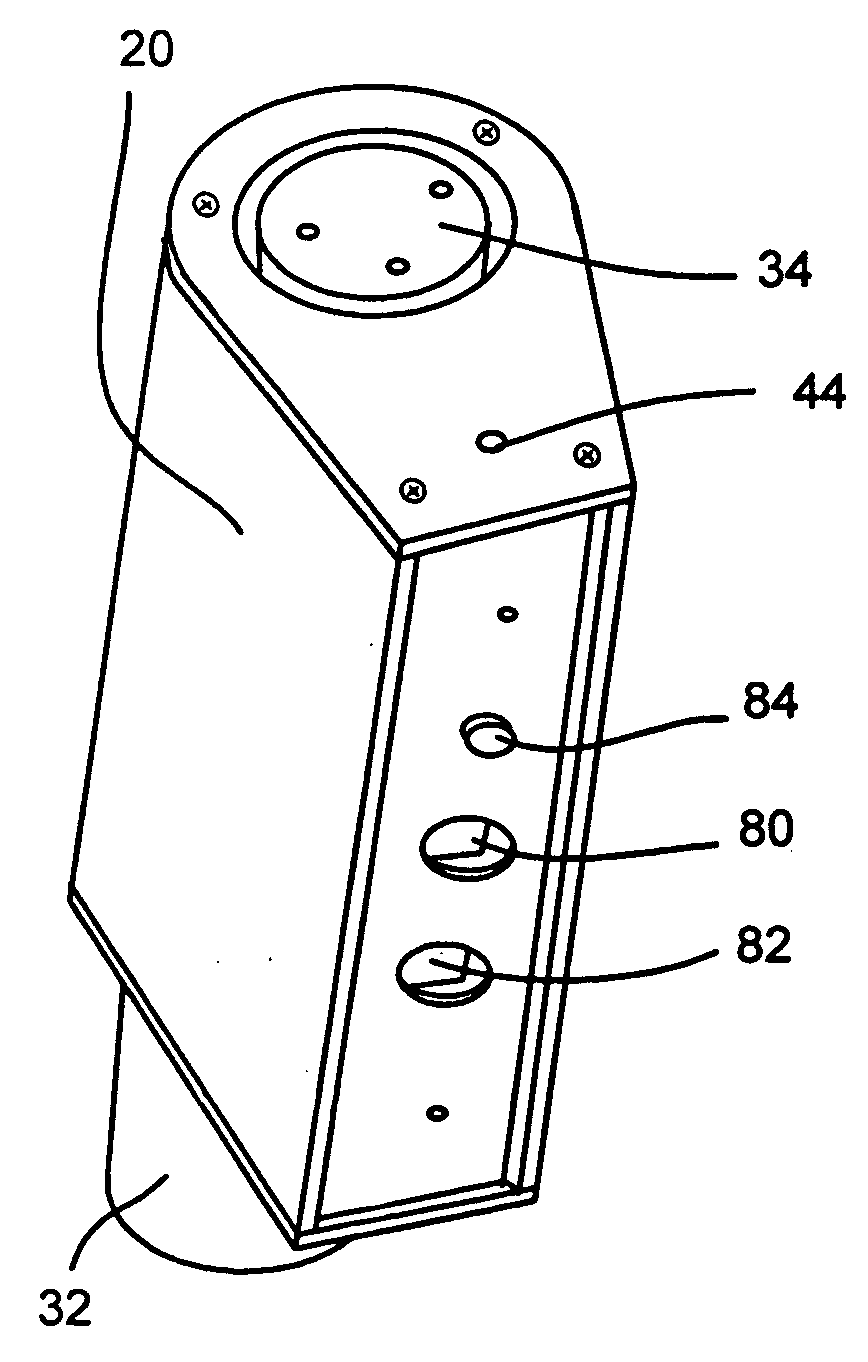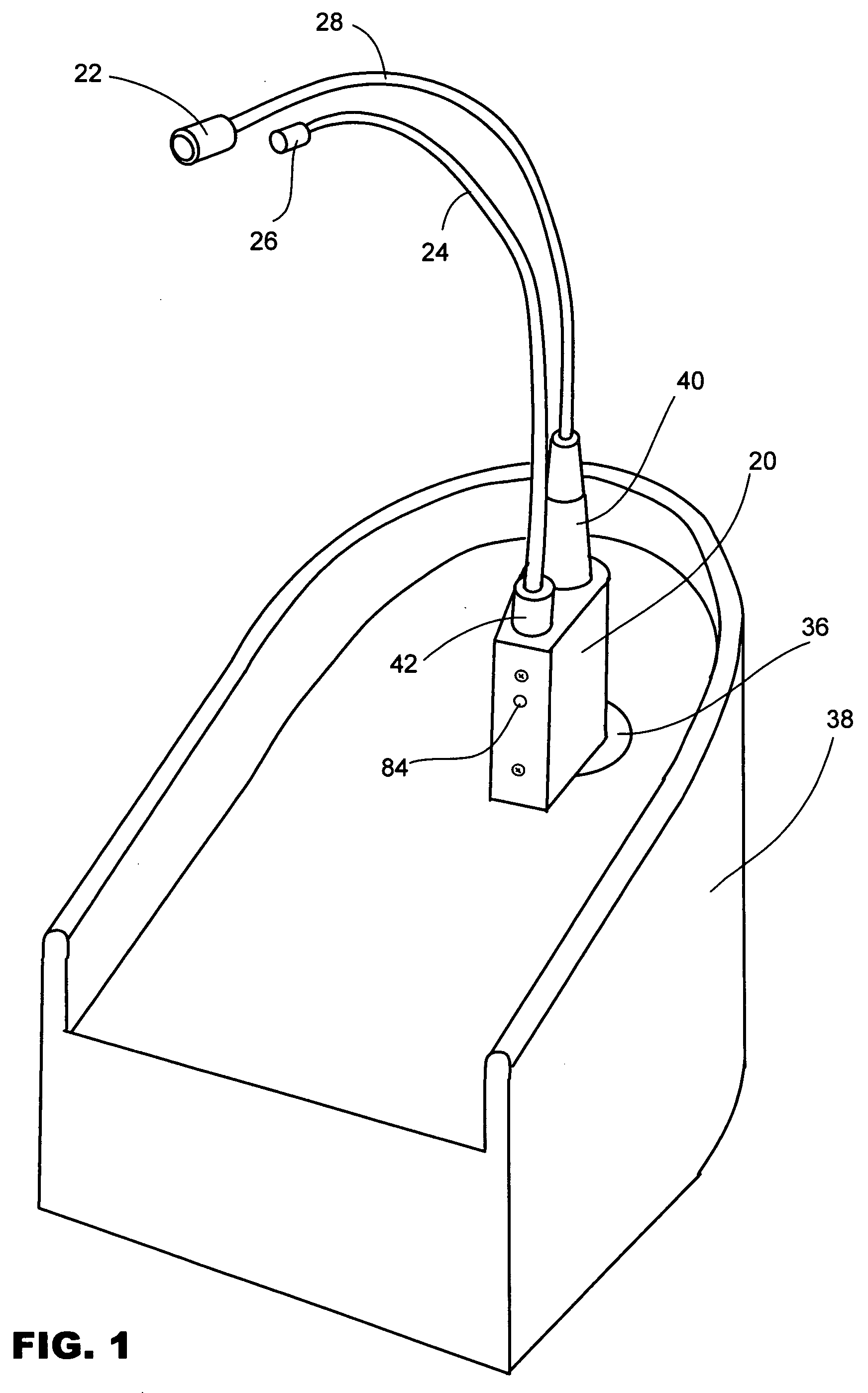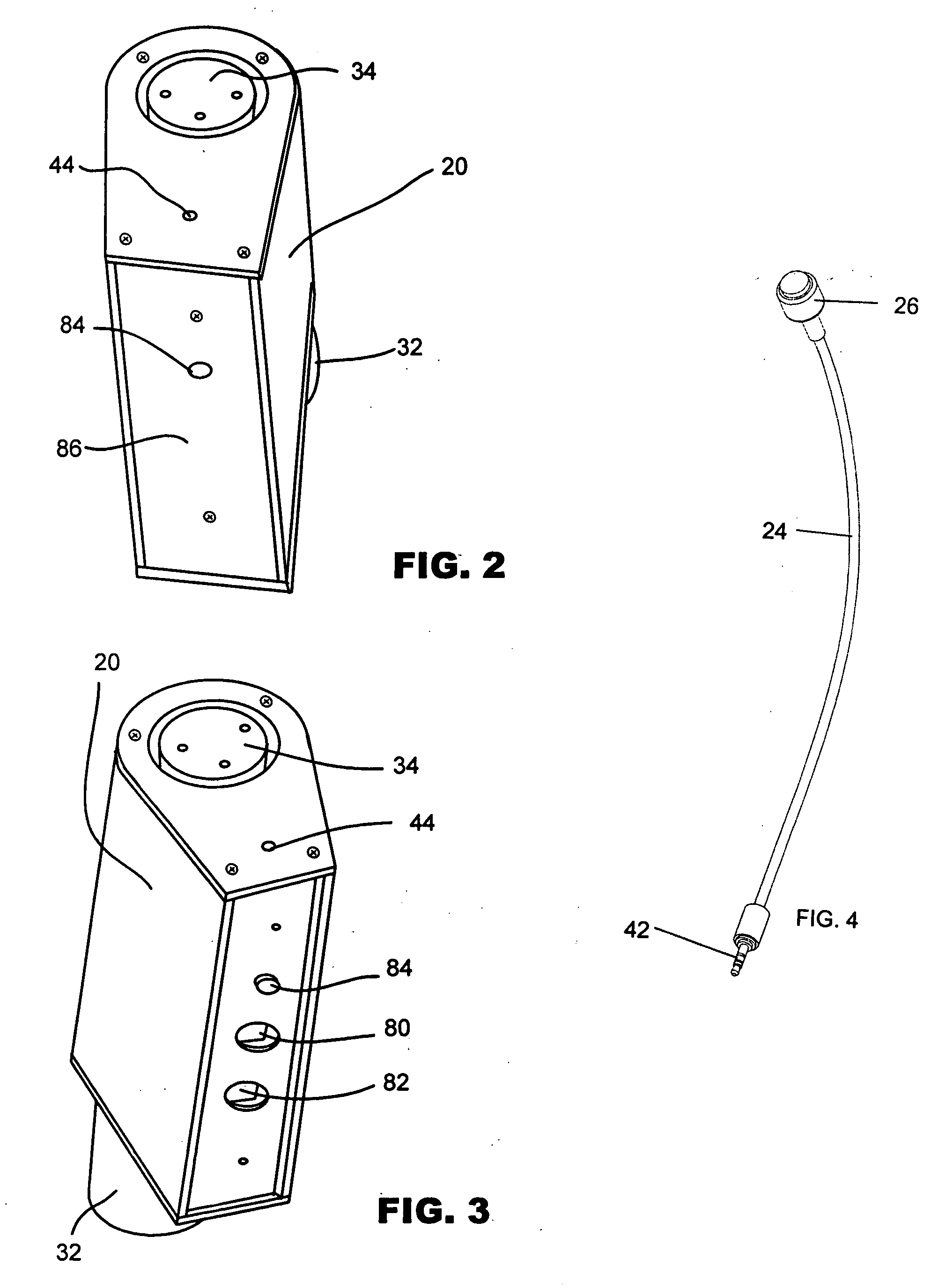Microphone enhancement device
a technology of enhancement device and microphone, which is applied in the direction of transducer details, electrical transducers, electrical apparatus, etc., can solve the problems of deteriorating proximity effect, weak speech volume, and often deteriorating normal speech quality heard by audiences in churches, board rooms or lecture halls. , to achieve the effect of reducing the magnitude of low band signal, reducing the level of bass tones, and improving speech broadcast quality
- Summary
- Abstract
- Description
- Claims
- Application Information
AI Technical Summary
Benefits of technology
Problems solved by technology
Method used
Image
Examples
Embodiment Construction
[0020] As shown in FIG. 1, a microphone enhancing device 20 in accordance with one embodiment of the invention is connected in series with a line from a transducer or microphone 22 which converts sound from a speaker using the microphone into an electric signal. In accordance with a first aspect of the invention, the device 20 includes circuitry such as shown in FIG. 5 which divides the electric signal from the microphone into a high band signal and a low band signal and reduces the magnitude of the low band signal when a detected signal level exceeds a threshold; thus the device reduces proximity effect in the microphone output. In accordance with a second aspect of the invention, a gooseneck 24 mounted on the device 20 supports an infrared sensor 26 which detects the presence of a person, and in the absence of a person being sensed, the device 20 mutes a signal from the transducer which is mounted on a gooseneck 28; mounting the infrared sensor on the distal end of a gooseneck pro...
PUM
 Login to View More
Login to View More Abstract
Description
Claims
Application Information
 Login to View More
Login to View More - R&D
- Intellectual Property
- Life Sciences
- Materials
- Tech Scout
- Unparalleled Data Quality
- Higher Quality Content
- 60% Fewer Hallucinations
Browse by: Latest US Patents, China's latest patents, Technical Efficacy Thesaurus, Application Domain, Technology Topic, Popular Technical Reports.
© 2025 PatSnap. All rights reserved.Legal|Privacy policy|Modern Slavery Act Transparency Statement|Sitemap|About US| Contact US: help@patsnap.com



